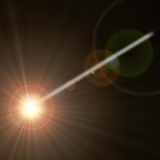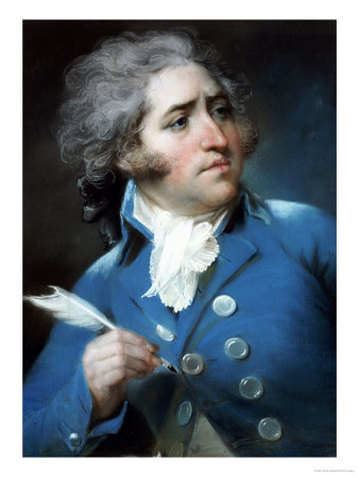Edward Topham and the Wold Cottage Meteorite
In the eighteenth century the notion that rocks could fall from the sky was dismissed by most educated people as ridiculous superstition. The only objects known to inhabit the Solar System other than the planets and their moons were comets, whose physical characteristics were poorly understood but which were thought to largely made of “vaporous” materials. Ceres, the largest of the asteroids, was not discovered until 1801. There was some speculation that stones ejected by volcanoes might be the source of alleged meteorites; but such a source would mean that the rocks would have a familiar composition.
At 3 o’clock on 13 December 1795 a stone fell from the sky above Wold Newton in East Yorkshire, very close to Wold Cottage, the home of local Magistrate Edward Topham. It left a crater a foot deep and a yard wide; but more importantly its fall was witnessed by a number of people.
Edward Topham (1751–1820) was had been educated at Eton and Trinity College Cambridge. He had a career in the military, becoming Adjutant to His Majesty’s Second Troop of Horse Guards. He became a playright and journalist, starting his own paper “The World” in 1787. In the early 1790s he retired to East Yorkshire to breed greyhounds.
Topham was able to obtain witness statements from a number of people including his own shepherd.
"All these witnesses that saw it fall agree perfectly in their account of the manner of it's fall, and that they saw a dark body moving through the air, and ultimately strike the ground: and though from their situations and characters in life, they could have no possible object in detailing a false account of this transaction. I felt so desirous of giving this matter every degree of authenticity that as a magistrate, I took their account on oath immediately on my return into the country. I saw no reason to doubt any of their evidence after the most minute investigation of it."
Topham was keen to publicise the meteorite and exhibited it in Piccadilly, London. The stone weighed 56 lbs (25kg) and proved to be made from a mixture of minerals and metals that would be highly unusual in terrestrial rocks. Most of the specimen is now in the British Museum, which purchased it in 1835.
In 1799, Topham built a brick and stone obelisk to mark the point of impact. The inscription on its side reads:
On this Spot, Decr. 13th, 1795
Fell from the Atmoſphere
AN EXTRAORDINARY STONE
In Breadth 28 inches
In Length 36 inches
And
Whoſe Weight was 56 pounds.
THIS COLUMN
In Memory of it
Was erected by
EDWARD TOPHAM
1799
Images
 Meteor
Meteor


